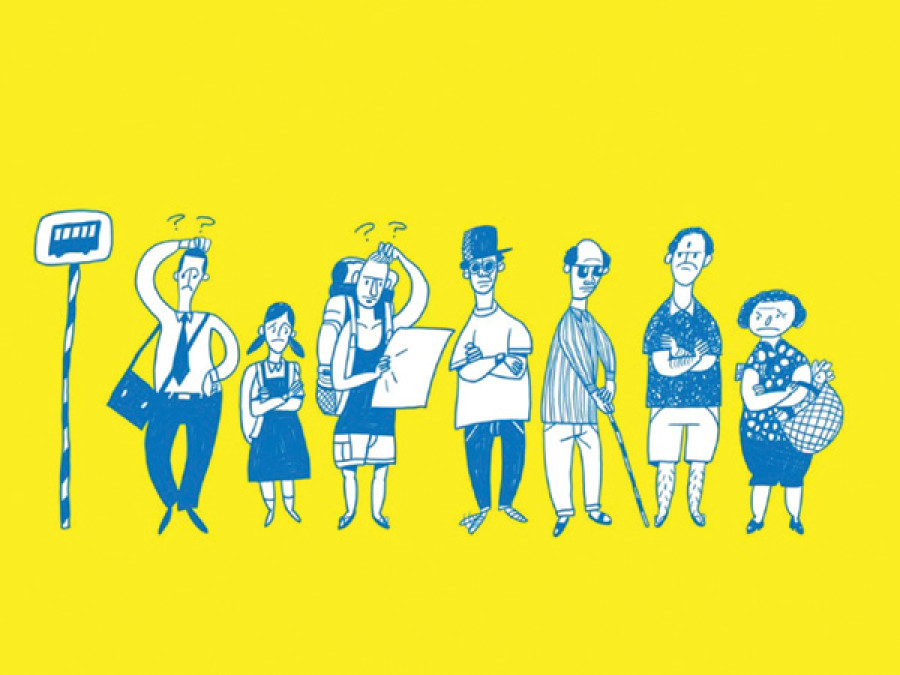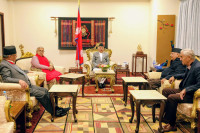Opinion
Bumper to bumper
Unfortunately people in most developing countries think that public transport is intended for the poor
Ashish Gajurel
Enrique Penalosa, a former mayor of Bogota in Columbia and traffic engineer, once said, “A developed country is not a place where the poor have cars. It’s where the rich use public transport.” The statement clearly indicates that public transport is not only meant for the poor but for all. Unfortunately, people in most developing countries think that public transport is intended for the poor. In Nepal, owning a private vehicle has been a status symbol. This belief is one of the major causes for the exponential increase in private vehicle ownership in Kathmandu. International experience shows that this perception tends to change if efficient public transportation is introduced. Kathmandu is a suitable point to start to help bring change in this perception.
Matter of choice
Half of all the road fatalities in Nepal happen in Kathmandu. According to the Traffic Police, around 1,800 people die in auto accidents in Nepal annually. The situation is deteriorating because the government has focused on widening the roads instead of developing public transportation. According to Bogota’s former mayor, trying to solve traffic problems by building bigger roads is like trying to put out a fire with gasoline. The more we focus on widening the roads, the more pressure there is to keep expanding. But land is a scarce resource. The best way to achieve sustainable transport management is developing a public transport system and widening the roads simultaneously. The recent fuel crisis forced auto owners in the valley to use public transportation. If a reliable, comfortable and affordable public transport system is developed, more people will start using public vehicles.
The prime minister of Great Britain and the president of France, for instance, are known to use public transport for their daily commute. Likewise, Narayan Kaji Shrestha, vice-chairman of the UCPN (Maoist), uses public transport. In the developed countries, public transportation is accorded priority, and the authorities make sure that it is safe, secure, comfortable and reliable. Nepal needs to learn from this and develop a public transport system with a focus on promoting electric vehicles. Electric trolley buses ran in Kathmandu from 1975 to 2008. Instead of extending such services, the government shut it down. If trolley buses could be revived, Nepal’s dependency on imported gasoline and air pollution would be reduced.
The better option
A bus rapid transit system (BRTS) could be immediately introduced on the 27.5-km-long Ring Road in the Valley. The system operates on bus lanes or other transit lanes in order to combine the flexibility of buses with the efficiency of a rail system. If there is strong political will, a BRTS can be established in one to two years. Building a BRTS infrastructure on the Ring Road will cost around $80 million.
In Europe, 5 percent of the public busses run on electricity, and this percentage is increasing. A Zero Emission Urban Bus System (ZeEUS) has been designed which aims to extend a fully electric solution to the core part of the urban bus network. While the BRTS is usually a highly successful model, there have been a few failures like the Delhi BRTS. The selection of corridors and problems at intersections have been cited as the the major reasons for the failure. The BRTS in Bogata, Guangzhou in China, Cleveland in the US and Curitiba in Brazil are successful examples.
Kathmandu is also ready for a metro rail system as a mode of public transportation because of its population size. However, it would take around 10 years to operate a metro system here. Given this fact, the BRTS could be the right solution as developing it will take only one to two years. The BRTS could be developed as a long-term urban solution to Kathmandu’s traffic problems. Nepal has a high hydropower potential and many hydro projects are in the pipeline. Therefore, the country should think about operating public transportation with electric power such as e-buses as well.
A BRTS requires separate dedicated lanes, automatic ticketing and traffic control system, high capacity buses, appropriate scheduling and reliable service. Public-private partnership (PPP) can be a suitable model for the development of the BRTS, as has been done in Chile, India and Brazil. The private sector is profit-oriented, and is generally effective in construction, operation, management and maintenance compared to the public sector. The implementation of a BRTS will reduce travel time, pollution and accidents. In Bogota, the average commute time has been cut by 20 minutes, air quality has improved by 40 percent and accidents have decreased by 79 percent after the introduction of the BRTS.
The Asian Development Bank is currently hiring a consultant to conduct a detailed feasibility study for the BRTS in coordination with the Ministry of Physical Infrastructure and Transport. Some experts in Nepal are advocating a metro system while others are pressing for a BRTS. The BRTS will be an immediate solution while the metro will be a long-term solution. Therefore, the concerned authorities must immediately work to develop a BRTS in Kathmandu by doing a rapid study instead of a time consuming, lengthy and detailed one.
Gajurel is a transport and traffic engineer




 18.12°C Kathmandu
18.12°C Kathmandu











